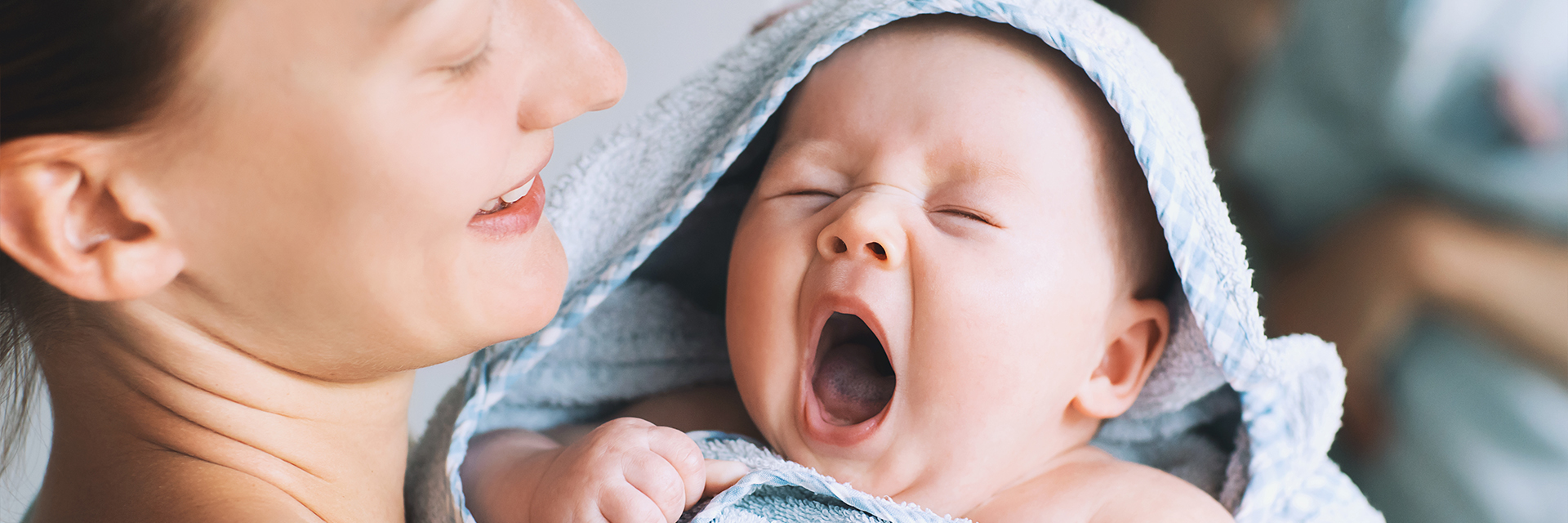Is bedtime a struggle? The many milestones of a baby’s first year often cause disruptions in sleep patterns. Sometimes a baby cries in frustration as he tries to roll over or stand up in his crib, disrupting any chance of going to sleep calmly afterward. For other babies, separation anxiety causes them to cry for you if they are left in their crib.
Don’t worry—there are things you can do to make bedtime more pleasant for all of you. A bedtime routine helps signal to your baby that it’s time to go to bed and can make going to sleep—and staying asleep—easier.
- Begin introducing some kind of bedtime routine when your baby is around 3–6 months old. It can be as simple as reading a story and singing a lullaby—something that says the day is over and it’s time to sleep. A consistent routine—such as changing the diaper, wiping the gums and any emerging teeth, changing into sleeping clothes, turning the lights off or low before putting your baby into his crib—differentiates “going to sleep” from a nap.
- At night, try not to let your baby fall asleep anywhere but in the crib, so that he knows the crib is for sleep and gets used to falling asleep there on his own.
- If your baby wakes during the night, keep things as quiet and soothing as possible. If you haven’t left a nightlight on, turn on a dim (15-watt) light. Keep feeding brief. Don’t talk—just make soothing sounds so she knows that you’re not there to play. Make sure that everything you’ll need during the night is in one place so you don’t have to carry her around while you search for a diaper or a wipe.
- After 3 months of age, try letting your baby fuss a bit before going in to comfort him, if he wakes up at night. This can help him learn to self-soothe and fall back to sleep on his own.
See also ...
• Tips for getting your baby to sleep
• VIDEO: Babies, self-soothing and safe sleep
This message is not intended to provide individual medical advice. Always seek the advice of a physician or qualified healthcare provider for any questions you have about your health or medical condition, your breastfeeding issues and your infant's health. Never disregard, avoid or delay contacting a doctor or other qualified professional because of something you have read in our emails, webpages or other electronic communications.
Powered by UbiCare

